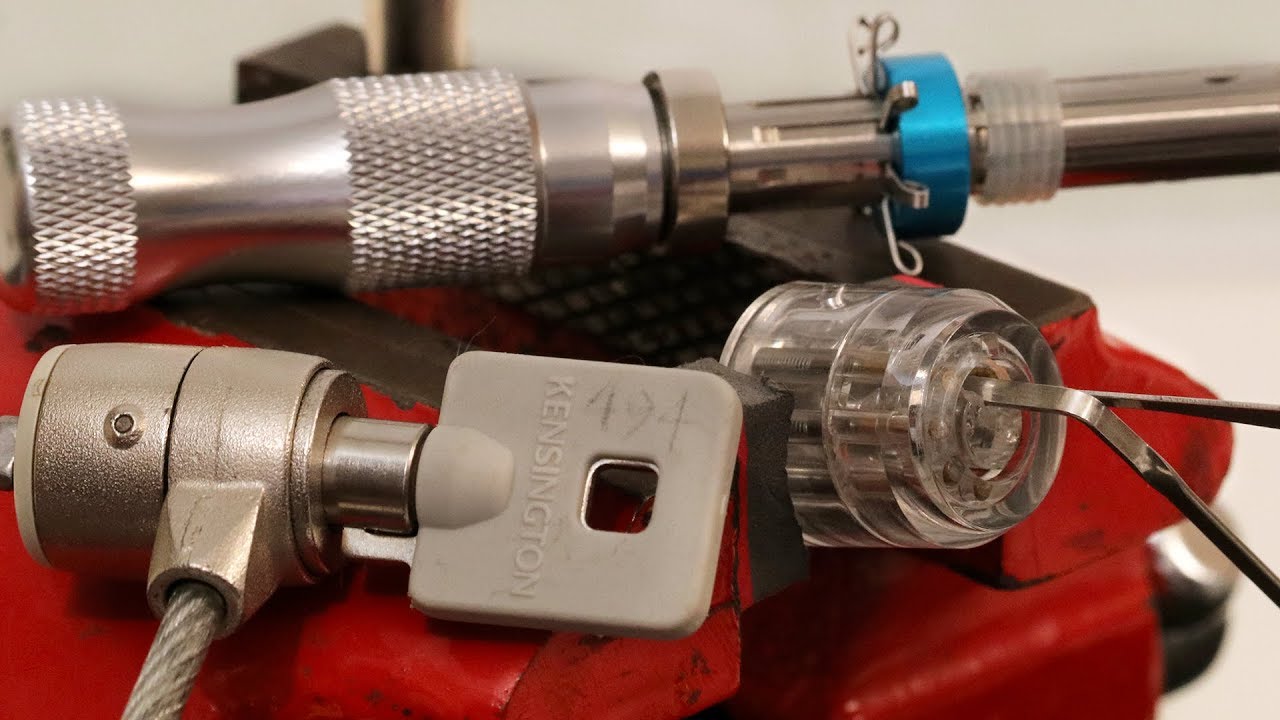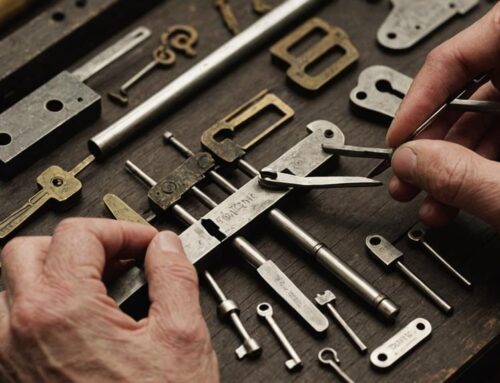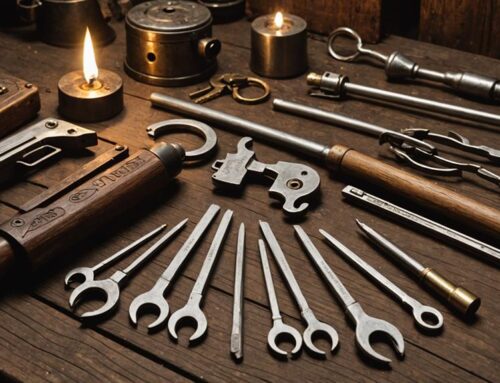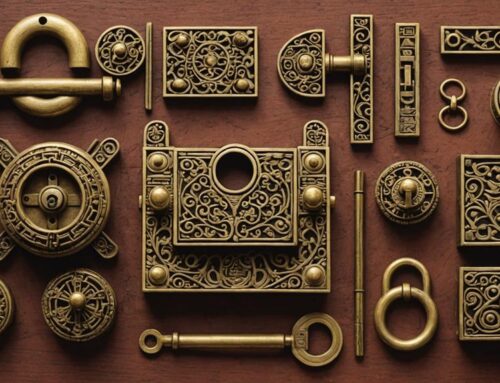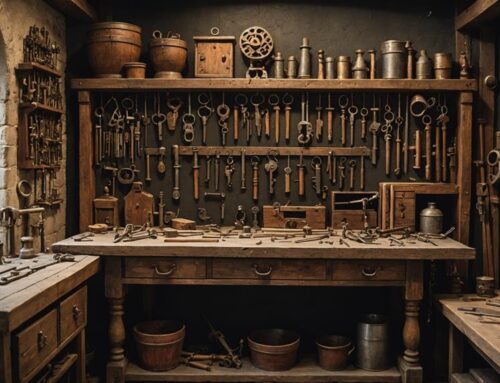You’ve stumbled upon the elusive world of tubular lock picking. Daunting? Maybe at first glance, but don’t fret. You’re about to master this craft with ease. This guide will equip you with knowledge, from selecting the right tools to understanding the lock’s intricate structure. Remember, practice is your ally here. So, ready to tackle this challenge head-on? Dive in, and become part of the community who’ve turned this complex art into second nature.
Key Takeaways
- Purchase a practice lock to perfect your lockpicking technique.
- Use a pen with an exterior the same diameter as or slightly smaller than the lock’s opening.
- Purchase a specialized tubular lock pick.
- Practice regularly to improve your lockpicking skills.
Steps and Preparation for Tubular Lock Picking
You’ve got to remember, when preparing for tubular lock picking, it’s crucial to start with purchasing a practice lock and thoroughly examining it to determine how many pins it has. This knowledge aids in choosing the right lock pick. It’s a community where attention to detail matters, and you’re part of it. Your next step involves cleaning locks. Dust or rust can hinder your progress, so ensure your lock is clean and functional. Slide your lock pick’s needles back and forth, aligning them with the lock’s pins. Feel the connection; it’s like a secret handshake between you and the lock. Finally, apply gentle pressure and rotate your pick. If the lock doesn’t give, don’t fret. Re-adjust, re-insert, and retry. Remember, patience is your best tool.
Picking a Tubular Lock With a Pen
Although it’s a bit tricky, anyone can learn to pick a tubular lock with a pen, and you’re no exception. This alternative method may not be as reliable as traditional picking techniques, but it’s handy in a pinch. Here’s how you can do it:
- Find a ballpoint pen and remove the ink cartridge.
- Cut four notches along the pen tube’s backside.
- Insert the hollow pen into the lock. The notches will grip the lock’s pins.
- Apply pressure and turn it like a key.
Don’t be discouraged if it doesn’t work at first; persistence is key. With practice and the right tools, you can master this technique. Remember, practice makes perfect, and you’re part of a community that’s eager to share knowledge and learn together.
Mastering Tubular Lock Picking With Specialized Tools
Even though you’re making progress with the pen technique, it’s crucial to delve into mastering tubular lock picking with specialized tools for more reliable results. Taking a systemic approach, employing the right tools and techniques for tubular lock picking, and avoiding common mistakes can significantly improve your success rate.
Here’s a simple table to guide you:
| Tools | Techniques |
|---|---|
| Tubular Lock Pick | Apply gentle pressure and rotate |
| Tension Wrench | Feel for the pins setting into place |
| Common Mistakes | Solutions |
| Using too much force | Be gentle and patient |
| Not aligning the pins correctly | Ensure proper alignment before rotation |
Helpful Tips and Techniques for Tubular Lock Picking
In this session, we’ll cover eight valuable tips and techniques for tubular lock picking, but remember, patience and regular practice are the keys to mastering this skill.
- Start with a Practice Lock: A common mistake is jumping straight to real locks. Start with a practice lock to perfect your technique.
- Understand Your Lock: Examine it to determine the number of pins it has.
- Clean Your Lock: A clean lock is easier to manipulate, so remove any dust or debris.
- Use the Right Tools: Invest in a specialized tubular lock pick. Alternatively, explore alternative lock picking methods like using a pen, but be aware this is more challenging.
Avoid rushing the process and persistently practice. With time, you’ll feel a sense of belonging in the lockpicking community.
Important Information and Warnings About Tubular Lock Picking
You’re learning about tubular lock picking, but it’s crucial to understand the potential risks and legal implications as well. Picking locks should always be for legal purposes, like enhancing your security knowledge or accessing your own locked goods. Now, let’s discuss the pros and cons of tubular lock picking with a pen. It’s a low-cost method, and the pen’s tube can act like a makeshift key. However, it requires precision and the pen’s diameter must match the lock’s opening. Common mistakes to avoid in tubular lock picking include applying excessive force, which can damage the lock, and not cleaning a rusty or dirty lock before picking. Remember, practice makes perfect. Your belonging to this skillful community means patience, persistence, and commitment to mastering the art.
Frequently Asked Questions
What Are the Common Types of Tubular Locks Found in Everyday Items?
You’ll frequently find tubular locks in everyday items like bike locks, vending machines, and ATMs. They’ve evolved over time, enhancing security with their unique cylindrical design and complex pin mechanisms.
Are There Any Specific Brands or Models of Tubular Lock Picks Recommended for Beginners?
As budding lock-pickers, HPC and SouthOrd offer beginner-friendly tubular lock picks. Remember, proper ‘Tubular Lock Pick Maintenance’ is key and having ‘Essential Lock Picking Materials’ ensures you’re always ready to practice.
How Long Does It Typically Take to Master the Art of Tubular Lock Picking?
Mastering tubular lock picking varies; it’s not an overnight skill. With consistent practice, understanding lock picking ethics and the history of tubular locks, you could proficiently pick these locks in a few months.
Are There Any Local or Online Communities Where One Can Learn and Practice Tubular Lock Picking?
Ever considered joining a locksmith training course? Many online platforms and local communities exist where you can legally learn and practice tubular lock picking. It’s a great opportunity to enhance your security system knowledge.
What Are Some Common Mistakes Beginners Make When First Learning to Pick Tubular Locks?
You’re often too forceful initially, damaging the lock. Overlooking lock maintenance, like cleaning, is common too. Misaligning the picking needles with the lock pins is another mistake. Remember, mastering picking techniques takes patience and practice.

